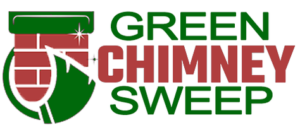A well-maintained chimney is crucial for the safety and efficiency of your home. Over time, chimneys can suffer from a variety of issues, from creosote buildup to structural damage. Understanding the professional chimney repair process can help homeowners anticipate what to expect and why these repairs are necessary. In this comprehensive guide, we will walk you through the stages of a typical chimney repair and highlight the importance of professional maintenance for your chimney system.
1. Initial Inspection and Assessment
The first step in any professional chimney repair process is a thorough inspection and assessment. A certified chimney sweep will conduct a detailed examination of the chimney structure, both internally and externally. This inspection often involves the use of specialized cameras to inspect the flue and other hard-to-reach areas. The purpose of this inspection is to identify any existing damage, creosote buildup, blockages, or other potential issues.
Common issues identified during inspections include:
- Cracked or crumbling mortar joints
- Damaged chimney liners
- Blockages caused by debris or animal nests
- Creosote buildup, which is highly flammable
- Structural damage to the chimney crown or cap
2. Diagnosis and Repair Plan
After the initial inspection, the chimney professional will provide a detailed diagnosis of the issues found and recommend a repair plan. This plan will outline the necessary repairs, the materials needed, and an estimated timeline for completion. Homeowners should expect a clear and transparent explanation of the scope of work, including any potential complications that may arise during the repair process.
3. Preparing the Work Area
Before any repair work begins, the area around the chimney needs to be prepared to ensure safety and cleanliness. This often involves covering nearby furniture and flooring to protect them from dust and debris. Safety equipment, such as scaffolding or ladders, may also be set up to provide access to the chimney. Proper preparation is essential to prevent damage to the home and to ensure that the repair process goes smoothly.
4. Cleaning and Removing Debris
One of the first tasks in the repair process is to clean the chimney thoroughly. This involves removing any creosote buildup, soot, or debris that could interfere with the repairs. A professional chimney sweep uses specialized brushes and vacuums to ensure that the chimney is clean and safe to work on. Removing debris is not only crucial for the repair work but also helps to improve the overall safety and efficiency of the chimney.
5. Structural Repairs
Structural repairs are often necessary to address damage to the chimney’s masonry, flue, or liner. Common structural repairs include:
- Repointing: This involves removing damaged mortar from between the bricks and replacing it with fresh mortar. Repointing helps to restore the structural integrity of the chimney and prevent water penetration.
- Rebuilding: In cases of severe damage, sections of the chimney may need to be rebuilt entirely. This could involve replacing damaged bricks or stones and ensuring that the chimney is structurally sound.
- Liner Repair or Replacement: The chimney liner is a critical component that protects the chimney walls from heat and corrosion. If the liner is cracked or damaged, it may need to be repaired or replaced to ensure safe operation.
6. Waterproofing and Sealing
Water damage is a common issue for chimneys, often leading to structural problems and decreased efficiency. After structural repairs are completed, the chimney professional may apply waterproofing and sealing products to protect the chimney from future water damage. This process involves:
- Applying a waterproof sealant: A high-quality sealant is applied to the exterior of the chimney to prevent water infiltration.
- Installing a chimney cap: A chimney cap is installed on top of the chimney to keep rain, snow, and debris out. It also helps to prevent animals from nesting in the chimney.
- Repairing or replacing the chimney crown: The chimney crown, the topmost part of the chimney, is often repaired or replaced to ensure proper water drainage and to protect the chimney structure.
7. Final Inspection and Cleanup
Once all repairs and waterproofing measures are completed, a final inspection is conducted to ensure that the chimney is in good working condition. The chimney professional will check that all repairs have been completed correctly and that the chimney is safe to use. They will also clean up the work area, removing any debris and ensuring that your home is left in the same condition as before the repairs began.
8. Maintenance and Follow-Up
Professional chimney repair doesn’t end with the final inspection. Ongoing maintenance is crucial to ensure the longevity and safety of your chimney. Homeowners should schedule regular chimney inspections and cleanings to prevent future issues and to keep the chimney in optimal condition. The chimney professional will provide recommendations for maintenance and may schedule follow-up visits to ensure that the repairs are holding up well.
Conclusion
Understanding the process of professional chimney repair can help homeowners appreciate the complexity and importance of maintaining their chimney systems. From the initial inspection to the final cleanup, each step is designed to ensure the safety, efficiency, and longevity of the chimney. By investing in professional chimney repair and maintenance, homeowners can enjoy peace of mind knowing that their chimney is in good hands.
For expert chimney repair and maintenance services, trust the professionals at Green Chimney Sweep. Contact us today to schedule your inspection and keep your home safe and warm.
